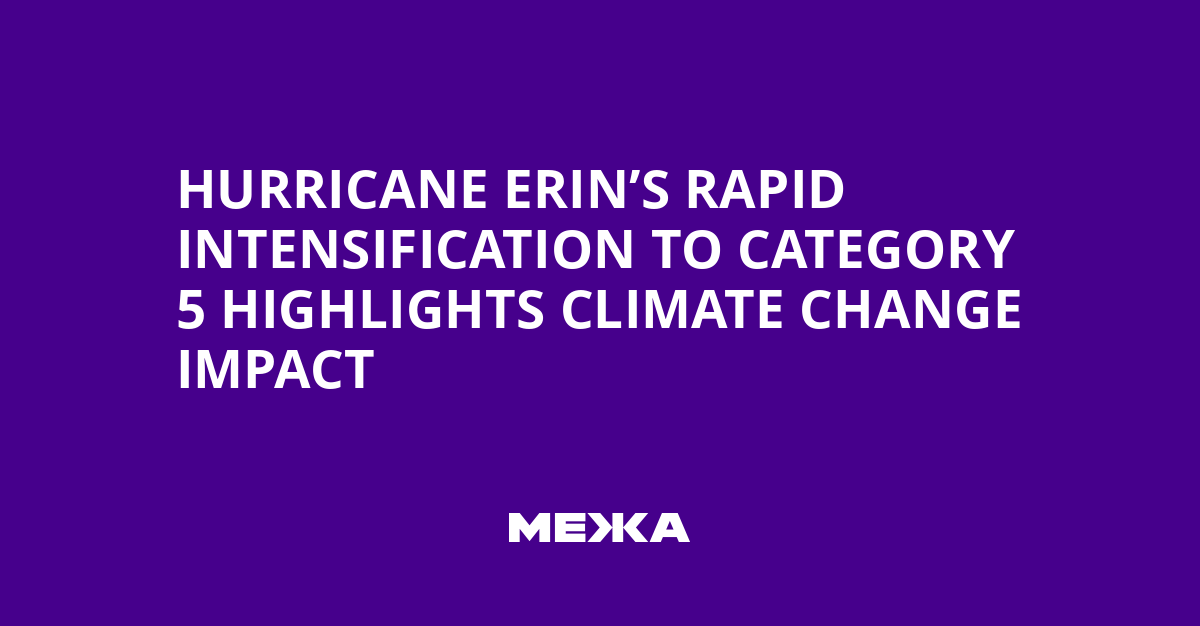The powerful Hurricane Erin is showing one of the fastest intensifications in Atlantic history, driven by warm sea-surface temperatures and increasing climate disturbances tied to global warming.
According to observations, Erin progressed from Category 1 with winds of about 75 mph (roughly 120 km/h) to Category 5 with nearly 160 mph in less than a day, placing it among the strongest storms in Atlantic history in terms of rapid intensification.
Preliminary assessments anticipate Erin’s potential return to Category 5 during an eye-wall replacement cycle, which could widen the wind field and the storm’s overall strength.
Rapid intensification is defined as an increase in wind speed of at least 35 mph within 24 hours; such cases are usually observed in the late season – September to October.
Climate change, particularly warming oceans, is increasing the frequency and intensity of tropical storms in the Atlantic. Erin could serve as an example of rising extreme weather events in a warming world.
As of mid-August 2025, Erin is among the 43 Category 5 storms; historically this is a rare but not exceptional phenomenon; since 2016 this has been the 11th Category 5 occurrence in the region.
Also unusual is that such a powerful Category 5 storm forms early in the season outside the Gulf of Mexico. Mid-August typically marks the peak of tropical activity, but the strongest storms usually occur later.
Forecasts and Coastal Risks
The 2025 Atlantic season has already shown recurring activity with the emergence of a Category 5 storm; previously such storms included Beryl and Milton.
Forecasts from the National Hurricane Center indicate Erin will miss a direct landfall, pass north of Puerto Rico, and turn northeast into the open Atlantic Ocean between the U.S. East Coast and Bermuda. The storm’s larger size will bring rougher seas, dangerous currents, and potential flood-prone zones along the coastline.
As of now Erin is located roughly 150 miles northeast of San Juan and about 160 miles northwest of the British shores. Tropical-storm and flood warnings are in effect for several territories.
The storm could bring dangerous waves and currents to the Bahamas, much of the U.S. East Coast, and northern Atlantic Canada over the next week, according to the National Hurricane Center.
Strong winds and rain are expected with possible localized flooding; the seas remain warm, which will help sustain Erin’s activity in the region.
Reporter: Erik Zerkel contributed to the piece.
